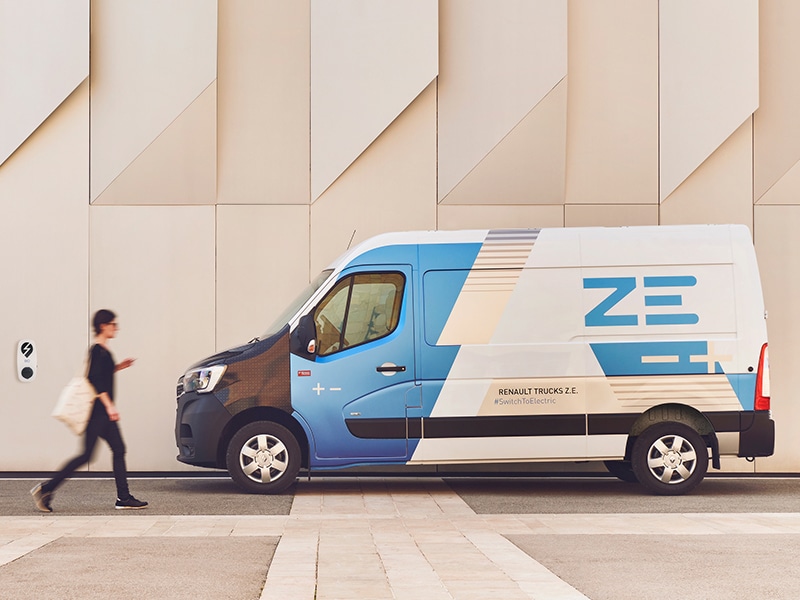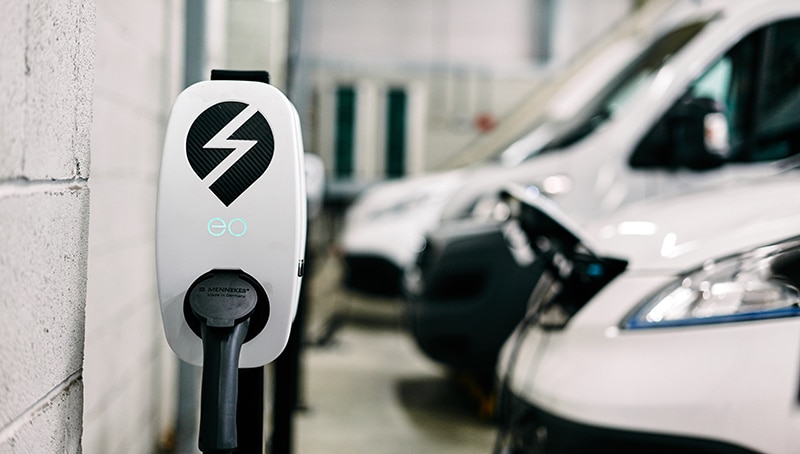
Whilst this year has seen many of us stay at home, shop more locally and give up commuting, emissions during the Christmas period are set to surge again.
During the first lockdown, shopping online reached an all-time high and brands that had never been online before flipped to serve customers anywhere in the world. From mountain bikes to mattresses, or even Michelin-starred meals – all can now be delivered direct to your doorstep.
The ONS reported in August that online retail sales were up by 52% year on year. As Black Friday approaches and people get ahead on their Christmas shopping, the number of deliveries is set to be – well, unprecedented. We’re heading into peak parcel season creating a surge in demand. Yup, you guessed it – we’re set to beat last year’s records by a delivery-mile.
Where people may have previously hit the high street, all our festive cheer is set to be delivered direct to our doorsteps – within 24 hours. This convenience is great for consumers but not so great for the planet.
Don’t get me wrong, this boom in spending is good for the economy and supports jobs, but the negative impact on emissions targets cannot be ignored. We all need to question how ‘green’ our parcels really are.
Prior to the pandemic, the World Economic forum predicted that carbon emissions were set to increase 30% by 2030 in the top 100 cities globally. It stated that the increased demand for e-commerce and delivery would contribute to a 36% increase in the number of delivery vehicles in inner cities . Based on these stats, it’s predicted that CO2 emissions could reach 25 million tons, without intervention. The prospects don’t look good for the environment.
So, on the eve of Black Friday, we must ask: ‘What can we do to reduce our footprint?’
Well, we can all start by trying Click and Collect this Christmas. If we can combine journeys and collect a parcel (or two) as part of an existing trip then we’ve removed a few miles from Santa’s sat nav.
But, a big responsibility lies with online retailers who must review their delivery systems and options – especially in the final mile. Organisations must ask: ‘Could this delivery be done by pedal power (yes, e-bikes count!) or even pedestrian power? Not only will this save emissions, but it will also provide more jobs. Small changes in the final mile could lead to significant environmental savings.
There are, however, just some gifts that don’t fit under the tree. Or in this scenario, on the back of a bike. The reality is that for Christmas to reach every doorstep this year some of our pandemic parcels must be delivered by van. But not just any van – an electric van.

EO Genius smart charger for commercial electric vehicles
The Government’s latest announcement highlighted the need for businesses and consumers (that’s you) to move towards electric vehicles. And quite frankly, the sooner the better.
I’m not here to spread more doom and gloom – we’ve had enough of that this year. Instead, I’m here to shine a light on those companies that are making significant progress in making your parcels more green.
Delivery firms are often the first to face criticism for their contribution to congestion and emissions. But this winter, we must remember that Christmas simply won’t be possible without them. In fact, it’s these very same businesses that are providing a blueprint for the world on electrification.
This year, delivery firms are moving off Santa’s naughty list and leading the charge in investing in clean and green delivery methods. Royal Mail has spent the last year trialling electric vans for national rollout; DPD now has over 700 electric vehicles in its fleet and Amazon has just bought 1,800 electric vans for its Europe-wide delivery fleet. This is electrification like never seen before.
I believe that this is just the start, there’s wider support for this movement towards greener fleets. The UK Electric Fleet Coalition is a group which advocates for accelerating the transition to electric vehicles in the UK. The list of companies supporting movement is incredible; from BT to Centrica, and DPD UK to Mitie. This Coalition has been calling on the Government to commit to 100% EV sales by 2030 – and, low and behold, look at what was announced in the Government’s 10 Point Plan.
The action and backing of such large businesses shows that we’re moving in the right direction. We’re in the eye of a ‘perfect storm’ for change. Whilst 2030 may seem like a distant horizon to some, fleet owners who think that it gives them a few years to consider their transition at leisure will be mistaken. Pressure is building on all sides and consumers will start to demand for green (not brown) parcels.
Of course, adopting EVs should not be entirely driven by fear of moral, regulatory and financial punishment (although every little helps). There are also compelling ‘carrots’ incentivising businesses to adopt commercial electric vehicles – workplace charge point grants, tax benefits on installing charging infrastructure and the knowledge that snowmen could still be a thing in 50 years.
We must remember that the challenge of making parcel delivery more sustainable cannot be solved overnight. Delivery firms and online retailers are taking decisive action to make their fleets (and your parcels) greener, but a shift to zero emissions will take time. These businesses have provided a backbone to a truly tough year and we must applaud them for the ambitious steps they’re taking to reduce the carbon footprint of our stocking fillers.
This Christmas, I ask one thing of you all – leave a carrot out for Rudolph and a Mince pie for your delivery driver. And, whilst they are munching away, ask the question – is that an electric van they’re driving?
About the author
Charlie Jardine is the founder and CEO of EO Charging (EO), a UK-based electric vehicle charge-point and charging software developer. EO is a leading provider of end-to-end fleet electrification solutions, also providing installation services and ongoing operations and maintenance. EO’s technology is used by many of the world’s biggest businesses and fleet operators and it distributes to over 30 countries around the world.





